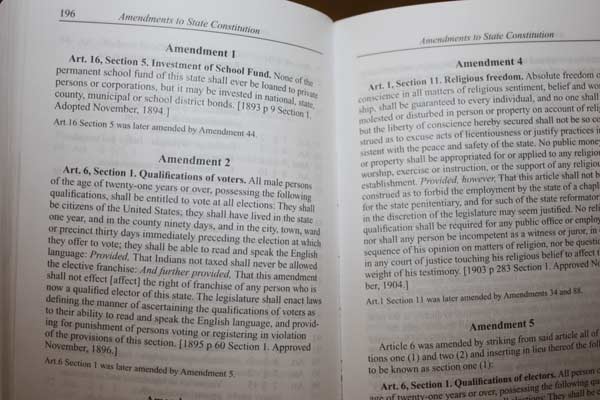Need list of proposed constitutional amendments? We got it
You’d be hard-pressed to find a year when there hasn’t been at least one legislative proposal introduced in Olympia to amend the Washington Constitution. Most of these measures, known as House or Senate joint resolutions, fail to receive the full Legislature’s approval and thus be placed before Washington voters.
But there are years when such a measure gets the necessary two-thirds vote in both houses, giving Washington voters the final say on whether to change our state constitution.
If you’re curious to know how often proposed constitutional amendments have made it onto the statewide ballot and how many were approved, look no further than this handy list recently added to our Elections Division homepage.
The list covers proposed constitutional amendments going back to 1892, just three years after Washington was granted statehood. The list, which includes the number of votes for and against each measure, reveals that of the 175 proposed amendments placed on the ballot, Washington voters have approved 104 (nearly 60 percent) of them.
The first constitutional amendment passed by the state’s voters was in 1894. It declared that none of the state’s permanent school fund shall ever be loaned to private pensions or corporations, but it may be invested in national, state, municipal or school district bonds. The most recent, approved in 2012, dealt with implementing the Commission on State Debt’s recommendations on Washington’s debt limit.
The “Golden Era” for constitutional amendments being enacted by Washington voters was when Dan Evans was governor: Eight were approved in 1966, six more in 1968, seven in 1972, and two apiece in 1974 and 1976. Two examples:
• Changing the process for filling vacancies in legislative or partisan county elective offices (1968)
• Establishing a 30-day residency requirement for voting by otherwise eligible citizens at least 18 years old (1974)
The longest drought without voters approving of any constitutional amendment was between 1913 and 1919.
Among the more noteworthy amendments approved by voters:
• Allowing women the right to vote (1910)
• Establishing the initiative and referendum process (1912)
• Requiring Supreme Court and Superior Court judges to retire at age 75 (1952)
• Prohibiting an initiative or referendum passed by Washington voters to be amended or repealed by the Legislature within two years of the measure’s approval unless there is two-thirds vote in the House and Senate (1952)
• Establishing the State Redistricting Commission to redraw legislative and congressional district boundaries each decade based on equal population (1983)
• Establishing an independent citizens commission to set salaries of legislators, judges and state officials (1986)
